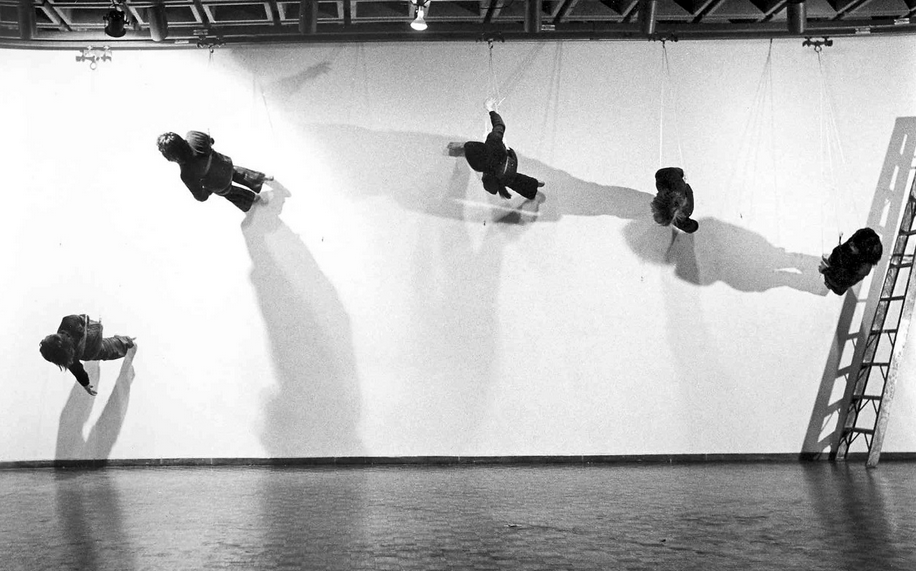The American postmodernist who danced to silence and choreographed in car parks passes at 80.
Trisha Brown, one of the most respected of the ‘postmodern’ generation of American choreographers, has died after a long battle with vascular dementia according to Barbara Dufty, Executive Director of the Trisha Brown Dance Company. Brown, latterly a close collaborator with the composer Laurie Anderson and artist Robert Rauschenberg, was best known at first for creating unusual dance works in unconventional spaces – in carparks, even dancing along walls – and more controversially for preferring silence to music.
 Trisha Brown’s Walking on the Wall
Trisha Brown’s Walking on the Wall
Patricia Ann Brown was born on November 25, 1936 in Aberdeen in Washington State, the natural landscapes of which she cited as an early inspiration. Learning her post-college craft at the annual American Dance Festival summer schools from 1958, she moved to New York in 1961 where she was one of the founders of the radical Judson Dance Theater. Taking her cue from work done in the previous generation by the likes of Martha Graham, her dance had a stripped back, utilitarian, even functional quality, enlivened by a keen sense of humour. Influences at the time ranged from Merce Cunningham to John Cage.
In 1970, Brown started her own troupe, the Trisha Brown Dance Company, and created some of her seminal works. In Walking on the Wall, dancers were suspended in harnesses moving sideways along walls. In Roof, her dancers were placed on 12 roofs across 10 blocks in downtown New York. In both cases, Brown cited a lack of conventional performance spaces and opportunities as an expedient for her choices, but nevertheless, it was indicative of her stated desire to “approach boundaries” and then cross them.
Taking a cue from the popularity of the NY Minimalist movement and the works of Steve Reich, Accumulation used repeated phrases that grew bit by bit with each repetition – a mute, choreographic equivalent of The House that Jack Built. Perhaps Opal Loop/Cloud Installation from 1980, in which a quartet of dancers undulate, bob and bend in complete silence, best epitomises her work up to that point. Soon after, she became more closely associated with dance pieces created to music: “I got fed up with listening to all the goddamn coughing,” she once remarked.
Close collaborations with designers like Robert Rauschenberg and composers like Laurie Anderson followed, the best known being 1983’s Set and Reset. Brown also began increasingly to work on more conventional proscenium arch spaces. Although New York remained her modus operandi, her work travelled internationally to London and Europe (the French especially took her to their hearts, making her a Chevalier dans l’Ordre des Arts et Lettres as early as 1988). Her 1995 duet, You Can See Us, performed with Mikhail Baryshnikov, saw him facing the front while Brown danced with her back to the audience.
Classical composers like Monteverdi and Bach inspired some of her pieces from the 1990s, and in 2002 she staged a memorable, if slightly abstract version of Schubert’s Wintereisse in which two dancers who worked in close conjunction with the impressively flexible baritone Simon Keenlyside.
Diagnosed with vascular demetia in 2011, in December 2012 it was announced that her 2011 work, I’m going to toss my arms – if you catch them they’re yours, designed by her husband Burt Barr (who died last year), and with music by Alvin Curran, would be Brown’s final piece. She passed away in a care facility in San Antonio on March 18.












Comments
Log in to join the conversation.